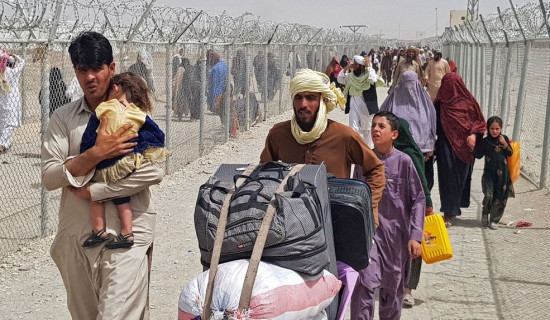- Sunday, 2 November 2025
Soaring Cost Of Living
Dixya Poudel
Globally living costs have soared making lives quite strenuous. It has been felt in Nepal too which is seeing costly living conditions as people have taken to spend less. It doesn’t help that despite the rising costs of commodities and services, the basic salaries of employees have remained stagnant. Thus, soaring living costs amid slow consumerism and widespread financial constraints have put a dent in the national economy.
Nepal’s economy might have been on a recovery track since the pandemic but the overall outlook is quite dim. It is discouraging that the Nepali rupee declined to an all-time low of Rs. 134.15 against the dollar in June, 2024. As a strong dollar has its repercussions, the plunge of Nepali rupee against the dollar could spell negative impacts on Nepal which is an import-based economy. The fact that custom duties have soared to over 30-40 per cent is bad news for the national economy as well.
As shopkeepers struggle to maintain their businesses, officers try to live in a meagre salary and the underprivileged opt to leave the nation for foreign employment, there have been repercussions on the nation’s fiscal growth. Unemployment is a major problem among the youth as the nation lacks adequate opportunities and resources. It isn’t surprising that Nepali youths seek education in foreign nations and choose not to return to the county once they graduate, leaving a gaping vacuum in the national human resources. While the nation greatly laments this growing trend among the youths to migrate abroad, it has not been able to provide the much necessary quality education and employment opportunities to them.
Consequently, they feel like the only option for progress is to shift abroad. However, even abroad they face problems of costly living conditions. Most developed nations too are seeing rising living costs as housing, shelter, food and healthcare have become unaffordable. Yet, they attract large numbers of migrants making their economy strained. Sadly, Nepal continues to face a dearth of human resources as the quality of life remains stagnant amid soaring prices. Rising living costs have various ramifications such as limited quality of life, social disparities, financial strain, reduced economic productivity and even tough family dynamics.
On such cases, people might have to compromise on basic services, sacrificing education, health, happiness and well-being. It could eventually put a toll on both the mental and physical health. As food prices soar, people might have to resort to low-nutrition foods that are cheap and readily available, thus leading to malnutrition, poor health and even diseases. Rising living costs particularly tend to put a dent on finances as the gap between the wealthy and the poor widens, leading to widespread social discontent and unrest.
It could also mean reduced personal growth, demotivation for entrepreneurship and less income for investment. Further, it could lead to reductions on leisure activities which are vital for psychological health and wellbeing. Despite its many downsides, rising living costs can be tackled with sound social safety nets and improved living wage policies along with government subsidies and increased opportunities for food security, affordable housing, quality education and progressive financial prospects.

















